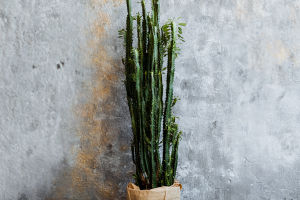When we go on trips with our families, we often see beautiful lotus flowers floating on the water. Have you ever closely examined the leaves of the lotus?
If you have, you might have noticed something fascinating: the leaves always seem to stay clean, and water droplets just roll off them. This unique trait has made the lotus a symbol of purity and elegance for centuries.
For a long time, scientists were puzzled by why lotus leaves don't get wet. It wasn't until several decades ago, when scientists used microscopes to magnify the surface of lotus leaves, that the mystery was finally solved.
The Science Behind the Lotus Leaf
At first glance, the surface of a lotus leaf looks smooth and flat. But when scientists zoomed in under a microscope, they discovered that the surface is actually covered with tiny, dense bumps. Additionally, the leaf is coated with a layer of wax. These tiny bumps are smaller than water droplets, so they can lift the water up and keep it from sticking to the surface.
The wax on the leaf is similar to the wax found in candles, and it's hydrophobic—meaning it doesn't like water. When water molecules meet the wax, they prefer to stick to each other instead of attaching to the wax. This special surface structure is why lotus leaves can repel water so effectively.
Why This Is Useful for the Lotus
Because the lotus leaf doesn't like water, it's not easily wet, even when it rains. The water beads up and rolls off the leaf, taking away any dirt or mud that might have stuck to it. This “self-cleaning” property helps the lotus stay clean, which in turn helps it stay healthy. By staying clean, the lotus can absorb sunlight more efficiently for photosynthesis, which is essential for its survival.
This amazing ability of lotus leaves to repel water is known as "hydrophobicity." While the lotus is one of the best examples of this trait, it's not the only plant with this characteristic. For example, you may have noticed the mercury inside a thermometer. Although mercury is a liquid metal, it doesn't stick to the surface of the glass. It forms small beads and rolls around because it, too, doesn't like to stick to surfaces.
Applying Nature's Magic to Our Lives
Even though lotus leaves can't be wet, they can still get stained by things like paint or other substances. Scientists are studying how to use this remarkable property in real life. For instance, the outer walls of tall buildings often get dirty after exposure to wind and rain. Cleaners must climb up to the building to wash the walls, but what if we could make the walls hydrophobic like lotus leaves? Then, when it rains, the walls would automatically clean themselves, saving time and reducing risks.
Another example is the non-stick cookware we use in our kitchens. The reason non-stick pans are so easy to clean is that they are coated with a special layer that prevents food from sticking, much like how lotus leaves repel water.
Imagine Clean Clothes That Never Stain!
We all love keeping things clean. After eating or playing outside, we might get our clothes dirty. Imagine if we could just rinse the dirt off with water and have our clothes be as good as new. This is exactly what scientists are working on. They're trying to create clothing that repels dirt and stains, just like how lotus leaves repel water. If this works, we wouldn't have to worry about getting our clothes dirty with things like ketchup or mud!
In conclusion, the lotus leaf's ability to stay clean and dry is a marvelous example of nature's ingenuity. It not only serves as a symbol of purity and beauty but also inspires innovations that could make our daily lives easier. Who knows? The future might bring us clothes and buildings that automatically stay clean, just like the lotus leaf!


